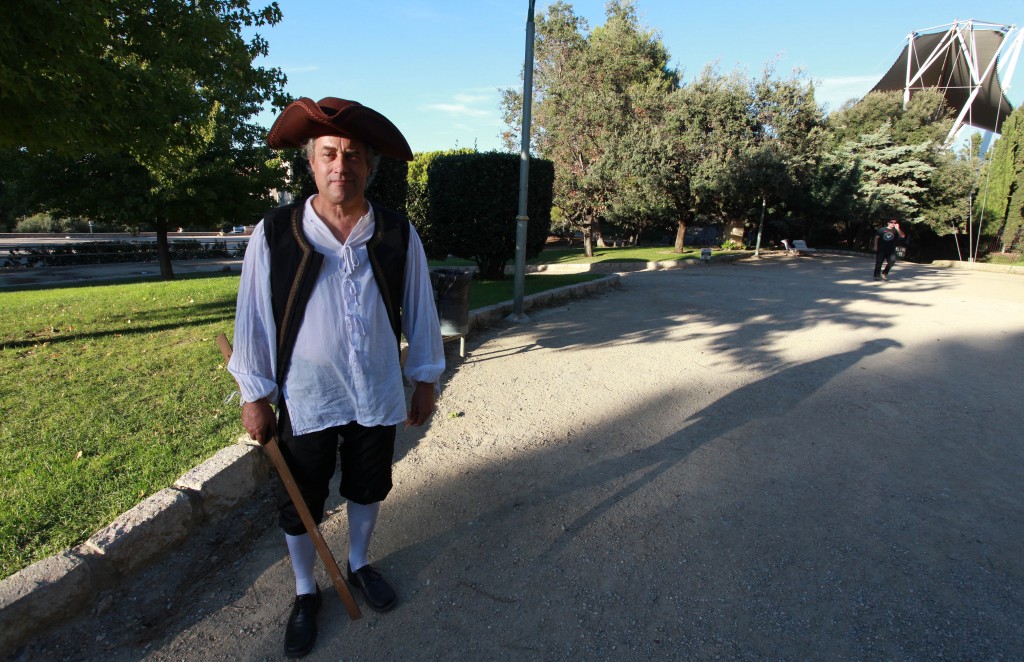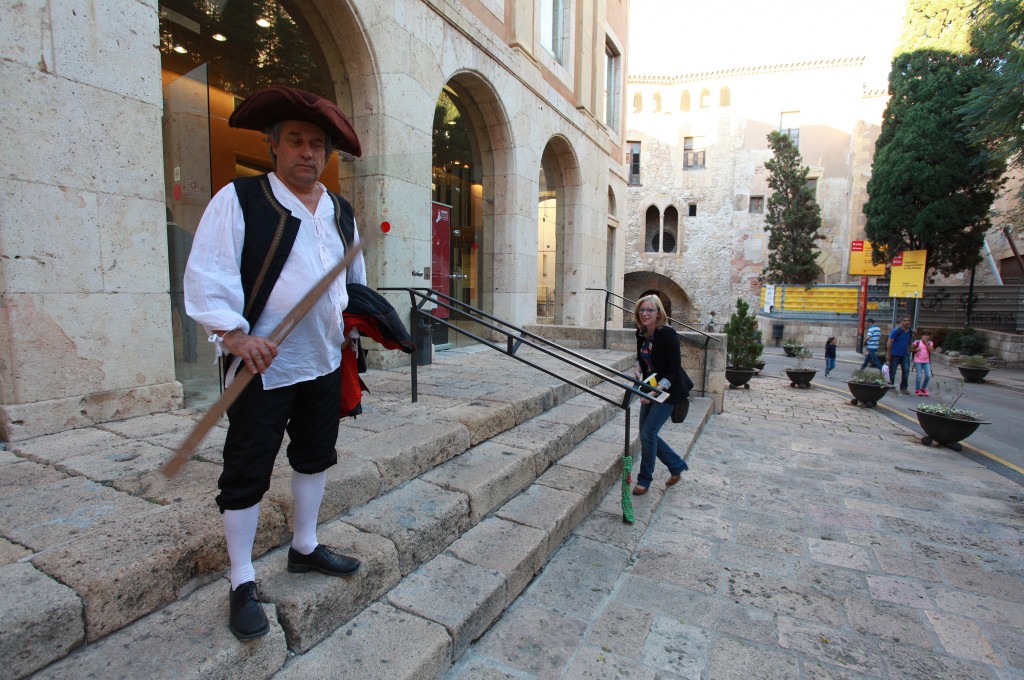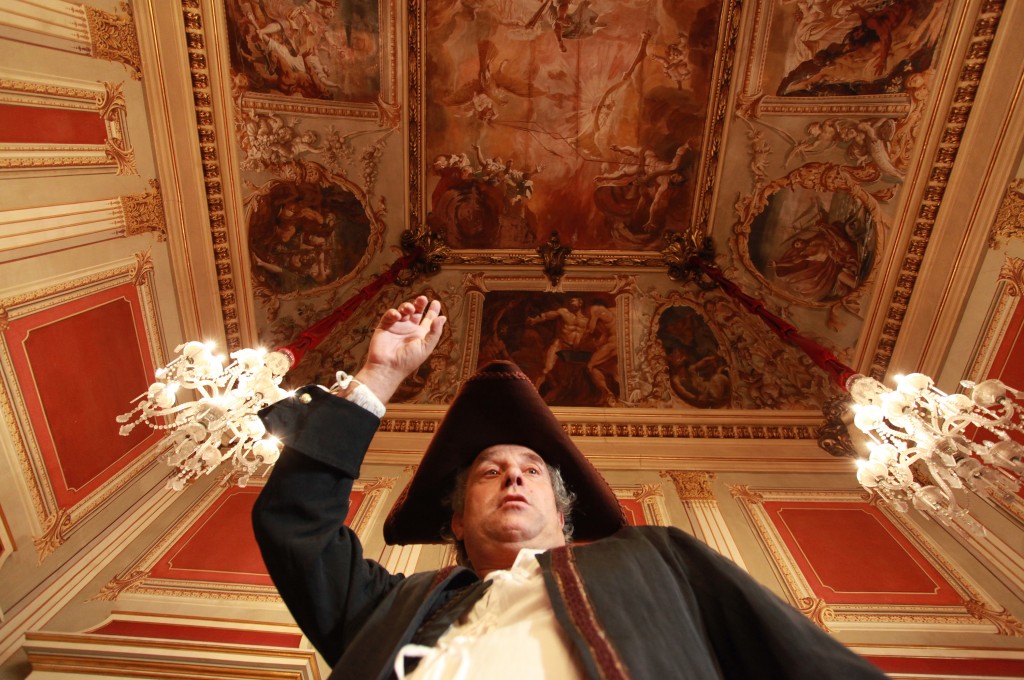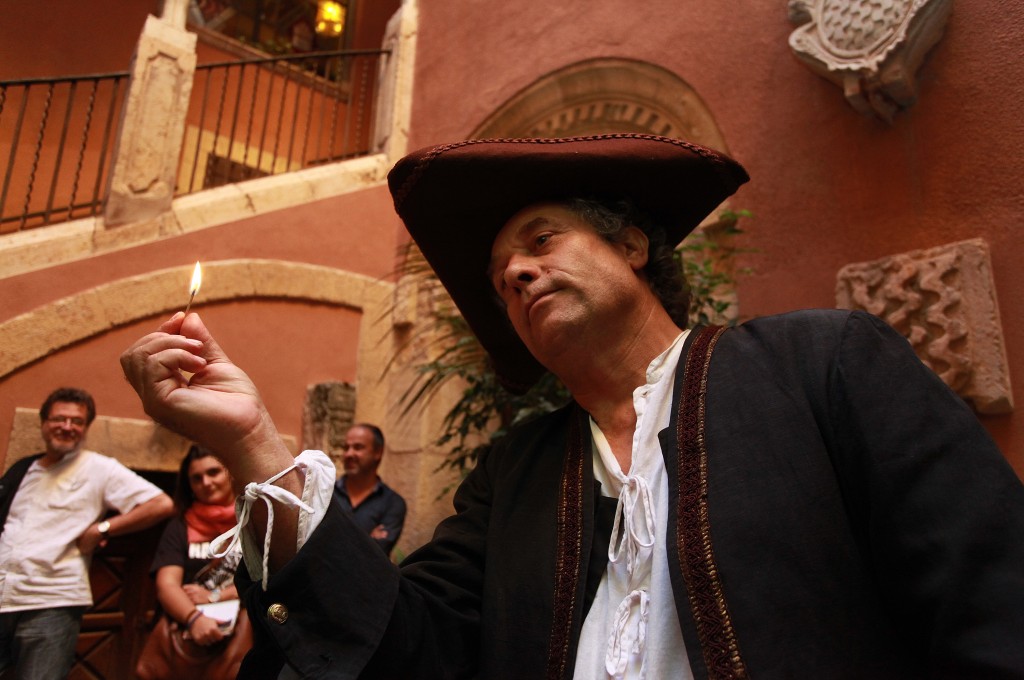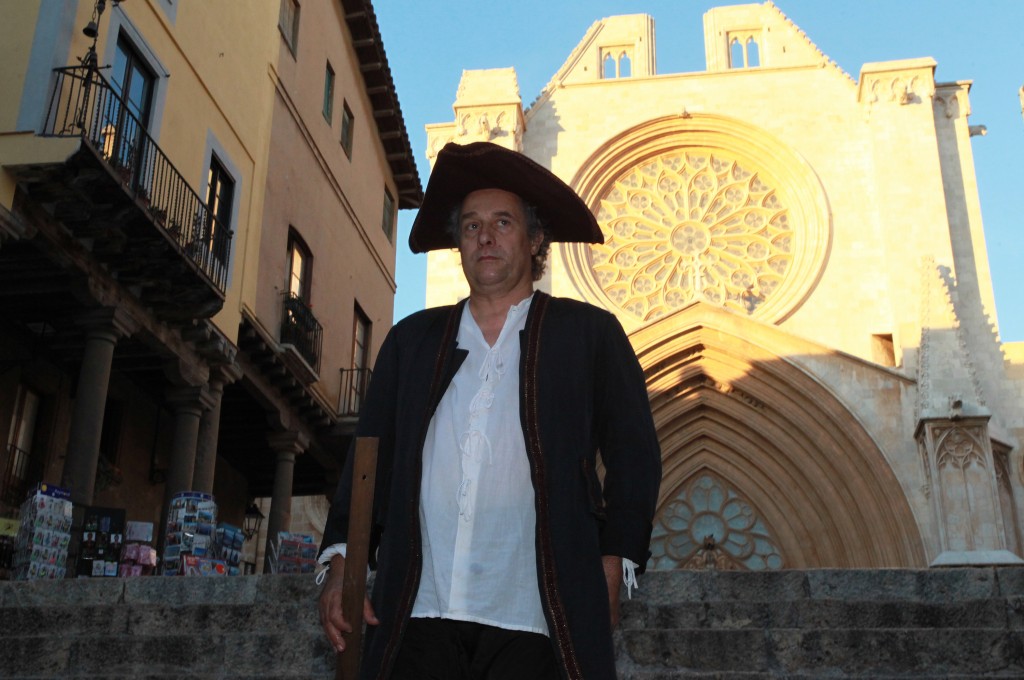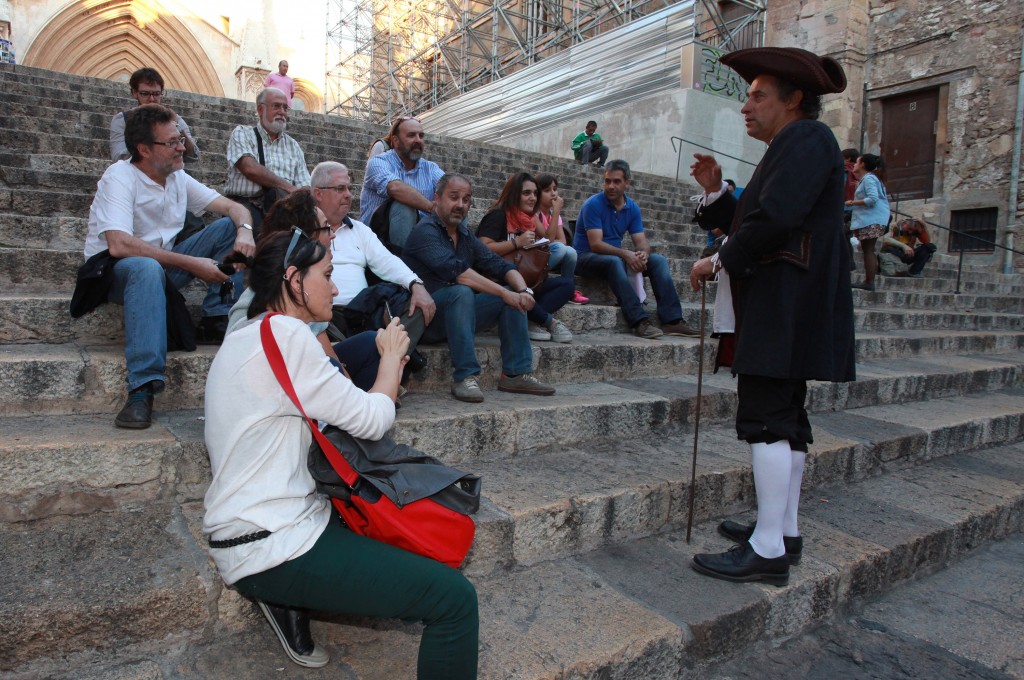Antoni Martí i Franquès (Altafulla, 1750 – Tarragona, 1832), the distinguished chemist who lived between the 18th and 19th centuries, has just been resurrected in the 21st century. Wearing a cocked hat –a man’s hat with turned-up brim–, and a white shirt, black waistcoat and breeches, and white stockings, he can be seen, as busy as he always used to, around those places he would frequent back in the city, two hundred years ago: at the Antiga Audiència –aka Societat d’Amics del País–, Casa Castellarnau, Pla de la Seu or at 8, Santa Anna Street, where one can find the Modern Art Museum nowadays.
This journey back in time is brought by Itinere Turisme i Cultura that, in collaboration with the Universitat Rovira i Virgili (URV), has designed a brand new guided route that will allow citizens and visitors to rediscover some areas of the city, while a Tarragona-adopted leading figure such as him, although he was actually born in Altafulla, is brought back. The contemporary Martí i Franquès of today is the engineer and anthropologist Jaume Martell (Santa Coloma de Queralt), who has been training to become a double of the distinguished chemist for months now. Jaume Martell and Itinere have scheduled, only for students at the moment, and coinciding with the Setmana de la Ciència (Science Week), this guided tour led by the very same protagonist, although it will be also available in the future for general public, on Saturdays.
The tour starts at Camp de Mart (despite people is said to meet up at the terrace opposite Portal del Roser), by a carob tree. We are in 1793, and a young Martí i Franquès, who is also an expert botanist as well as chemist, starts to delight us with his knowledge. The introduction presents both the character and his stretch relation to the land. It should be noted that Martí i Franquès was also a great landowner, since he had carobs –of great value back then- and olive trees, and became the very first producer of hemp in Catalunya. Between science and political explanations, there is also time for confessions, and this is how we find out he got married to Isabel Móra, from Valls. In fact, one of his main efforts was the successful construction of a road between Tarragona and Valls.
Our first stop is just a few metres away, at Antiga Audiència, which was home of the Societat d’Amics del País. Here, Martí i Franquès talks about politics, his journeys and the country’s necessity for infrastructures in the period, when compared to France, for example.
Less than a hundred metres away, Martí i Franquès stops again to enter Casa Castellarnau. This is an excellent opportunity to discover this historical and noble building accompanied by a host that seems to know every one of its corners. After walking through some rooms of the house, Martí i Franquès splits us in various groups in the inner courtyard and provides us with a number of scientific lessons. He tells us about the theory of the 4 elements, the different types of air, and the fact that water is made of two airs: the vital air (oxygen) and the inflammable air (hydrogen). Antoni Martí i Franquès was the scientist that found out that the proportion of oxygen in the atmospheric air is constant, of 21%.
The route goes on through the streets of Part Alta up to the stairs of the Cathedral, where the leader explains that, faced with the imminent arrival of the Napoleonic troops to the city, he signed up for the urban militia in order to defend the city from the attack.
The end is approaching. It’s been almost 75 minutes and we arrive to the Modern Art Museum, the small palace that had been his home, in Santa Anna Street. This was his workplace. The Arxiu de Tarragona still keeps an important part of his material, despite most of it was burned and destroyed during the siege of the Peninsular War. Martí i Franquès himself was injured in the attack, although he would still live for some years, until 1832.
Text: Ivan Rodon (@irodon)
Pictures: Pere Toda
Translation: Artur Santos (@artur_1983)


